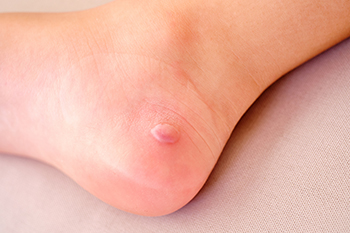Yakima
(509) 225-3668
Ellensburg
(509) 925-4633

Preventing sock blisters involves considering several key factors. Choosing the right sock material is vital, as synthetic blends or merino wool are excellent options because they wick moisture away from the skin and reduce friction. Cotton socks, on the other hand, tend to retain moisture, increasing the risk of blisters. Ensuring the correct sock size is also essential. Socks that are too tight can cause pressure points, while those that are too loose can create folds that rub against the skin. Additionally, the construction of the sock matters, as seamless socks or those with flat seams minimize irritation. Padded socks can provide extra cushioning and protection in high-friction areas. Paying attention to these details can significantly reduce the likelihood of developing painful sock blisters during activities. If you have developed blisters that have become infected, and would like to know if the socks or shoes are causing them, it is suggested that you consult a podiatrist who can offer correct treatment and prevention strategies.
Blisters are prone to making everyday activities extremely uncomfortable. If your feet are hurting, contact one of our podiatrists of Cascade Foot & Ankle. Our doctors can provide the care you need to keep you pain-free and on your feet.
Foot Blisters
Foot blisters develop as a result of constantly wearing tight or ill-fitting footwear. This happens due to the constant rubbing from the shoe, which can often lead to pain.
What Are Foot Blisters?
A foot blister is a small fluid-filled pocket that forms on the upper-most layer of the skin. Blisters are filled with clear fluid and can lead to blood drainage or pus if the area becomes infected.
How Do Blisters Form?
Blisters on the feet are often the result of constant friction of skin and material, usually by shoe rubbing. Walking in sandals, boots, or shoes that don’t fit properly for long periods of time can result in a blister. Having consistent foot moisture and humidity can easily lead to blister formation.
Prevention & Treatment
It is important to properly care for the affected area in order to prevent infection and ease the pain. Do not lance the blister and use a Band-Aid to provide pain relief. Also, be sure to keep your feet dry and wear proper fitting shoes. If you see blood or pus in a blister, seek assistance from a podiatrist.
If you have any questions, please feel free to contact our offices located in Yakima and Ellensburg, WA . We offer the newest diagnostic and treatment technologies for all your foot care needs.